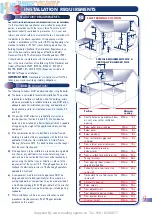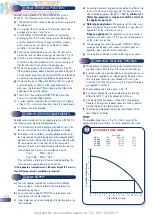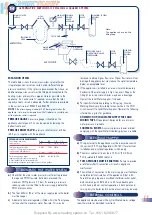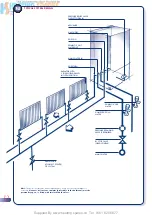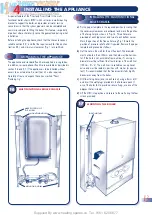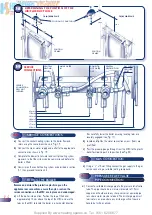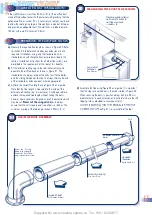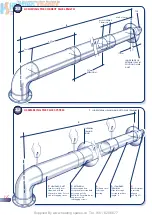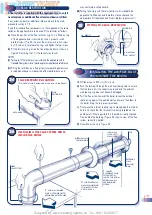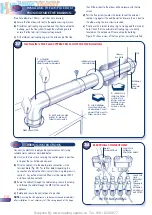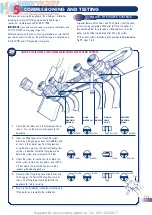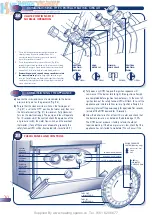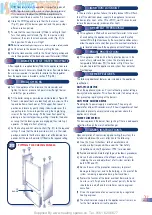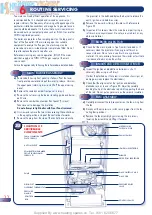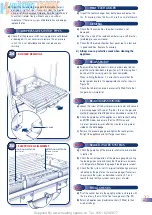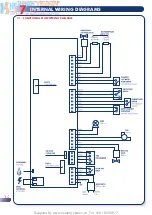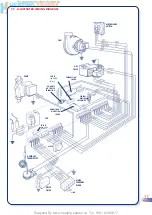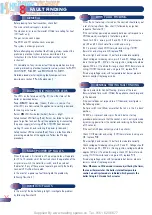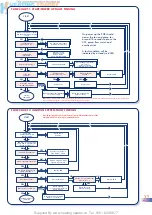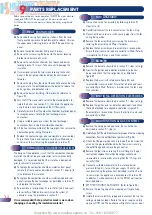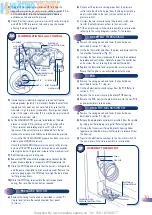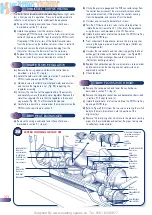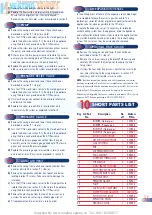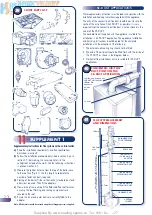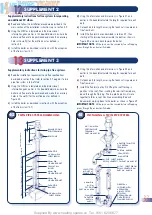
Supplied By www.heating spares.co Tel. 0161 620 6677
ROUTINE SERVICING
6
33
LOCATION OF
SERVICEABLE
COMPONENTS
6.1
MAIN BURNER ASSEMBLY
6.2
BURNER INJECTOR
6.3
IGNITION AND DETECTION ELECTRODES
6.4
FAN ASSEMBLY
To ensure continued efficient operation of the appliance, it is
recommended that it is checked and serviced as necessary at
regular intervals. The frequency of servicing will depend upon the
particular installation conditions and usage but in general once a
year should be adequate. It is the law that any service work must
be carried out by a competent person such as British Gas or other
CORGI registered personnel.
The boiler incorporates a flue sampling point on the top panel in
front of the flue outlet. If the service engineer has suitable
equipment to analyse the flue gas, the plastic cap may be
removed and a 6mm inside diameter sample tube fitted. Do not
forget to replace the plastic cap after use.
Before commencing any service operation, ISOLATE the mains
electrical supply, and TURN OFF the gas supply at the main
service cock.
Service the appliance by following the full procedure detailed below:
a)
Remove both casing front panels as follows: Pivot the lower
front panel downwards and pull forwards to release. Unscrew
the upper panel retaining screw and lift off the upper casing
panel.
b)
Remove the sealed chamber front panel (4 screws)
c)
Remove the nut securing the burner locating guide and burner
earth wire.
d)
Remove the combustion chamber front panel (7 screws).
Take care not to damage the insulation.
Do not attempt to light boiler with Front Panel removed.
e)
Unscrew and remove the two screws securing the control box
in the upright position and pivot the control box forwards.
f)
Remove the plug from the side of the control box and unclip
a)
Check that the main injector is free from dirt and debris. If
necessary clean the injector orifice using a soft brush or
vacuum cleaner. Do not use a wire brush or any abrasive
material. It is not necessary to remove the injector unless there
is evidence of debris inside the orifice.
a)
Inspect the ignition and detection electrodes in situ. If
necessary clean using a soft brush.
If either the electrode or the ceramic insulation show signs of
damage or wear, replace the electrode(s).
b)
Check that the alignment of the ignition and detection
electrodes are as shown in Figure 35. Adjust by carefully
bending the tip of the electrode rod whilst supporting the base
of the rod. Do not put any pressure on the ceramic insulation.
a)
Carefully disconnect the tab connectors on the fan wiring from
the fan.
b)
Disconnect the air pressure switch sensing pipes from the fan,
noting their positions
c)
Remove the fan assembly by unscrewing the two screws,
lowering the assembly and lifting it forwards.
the grommet in the bulkhead below the burner to release the
earth, ignition, and detection wires.
g)
Remove the burner by sliding it forwards with reference to
Figure 34.
h)
Inspect and if necessary clean the main burner ports using a
soft brush or vacuum cleaner. Do not use a wire brush or any
abrasive material.
•
COMBUSTION CHAMBER
FRONT PANEL FIXING
SCREWS (7)
•
•
•
•
•
•
•
•
•
• • •
AUTO AIRVENT
FAN ASSEMBLY BASE
PLATE SCREWS
PUMP
GROUP SET
CONTROL
BOX
AIR PRESSURE
SWITCH & PIPES
DETECTION ELECTRODE
BURNER
IGNITION ELECTRODE
•
GAS CONTROL VALVE
•
•
GAS COCK
PRESSURE RELIEF
VALVE
FAN ASSEMBLY
•
PRESSURE
GAUGE
•
OVERHEAT THERMOSTAT
•
CONTROL PANEL
22


